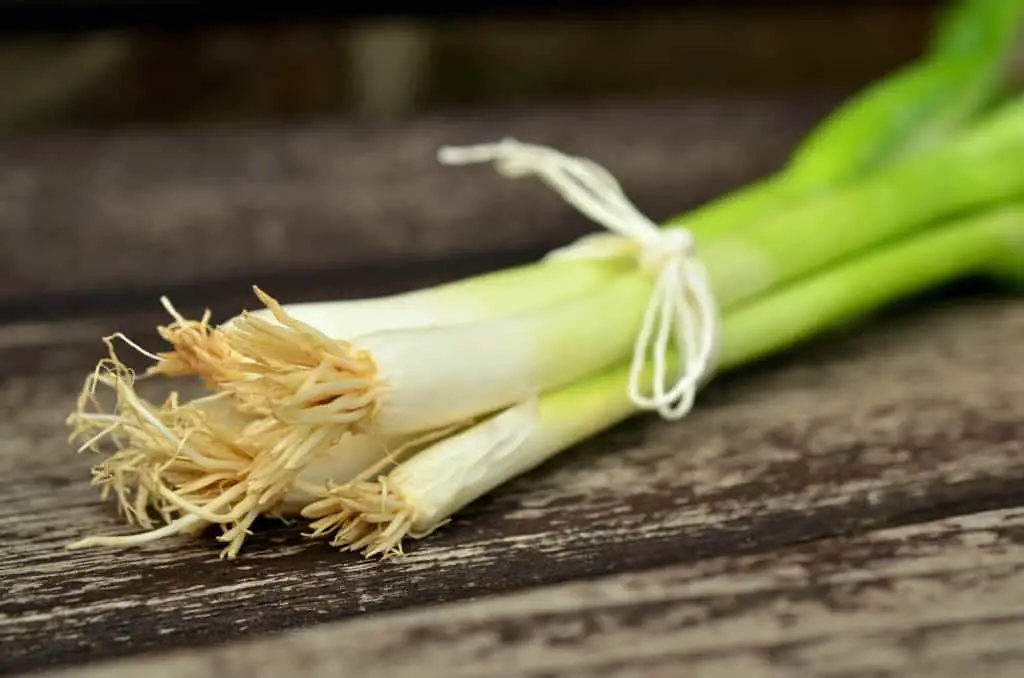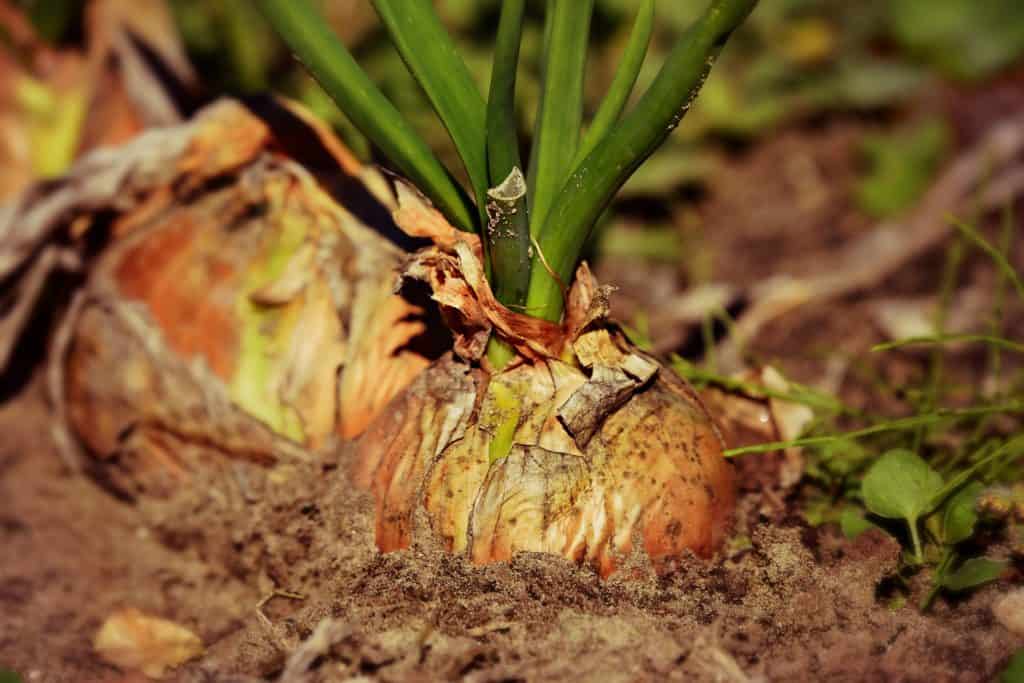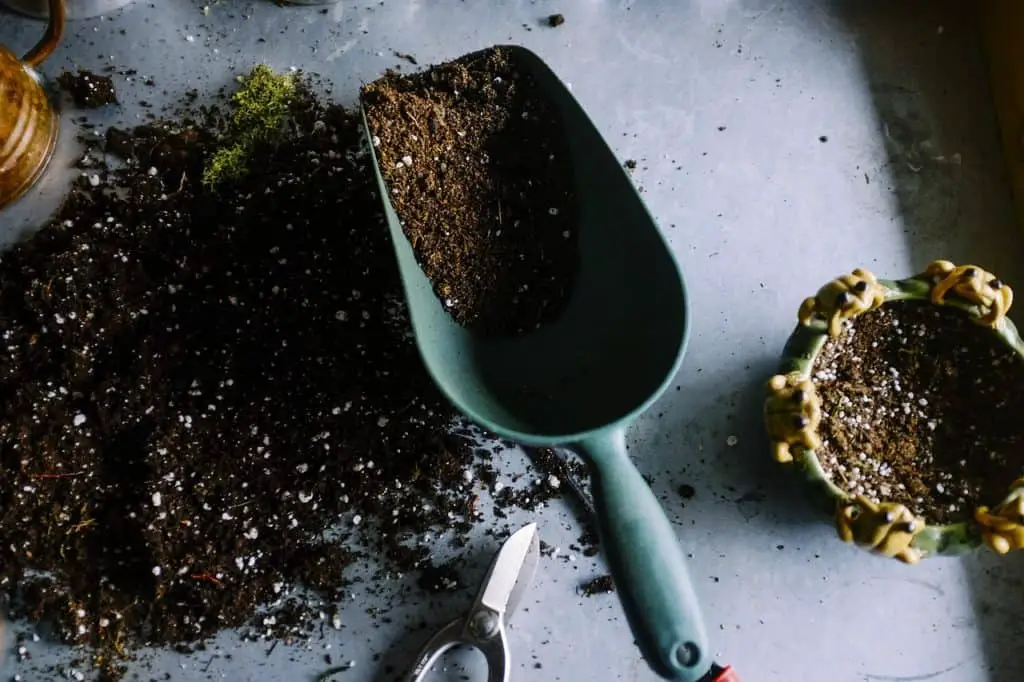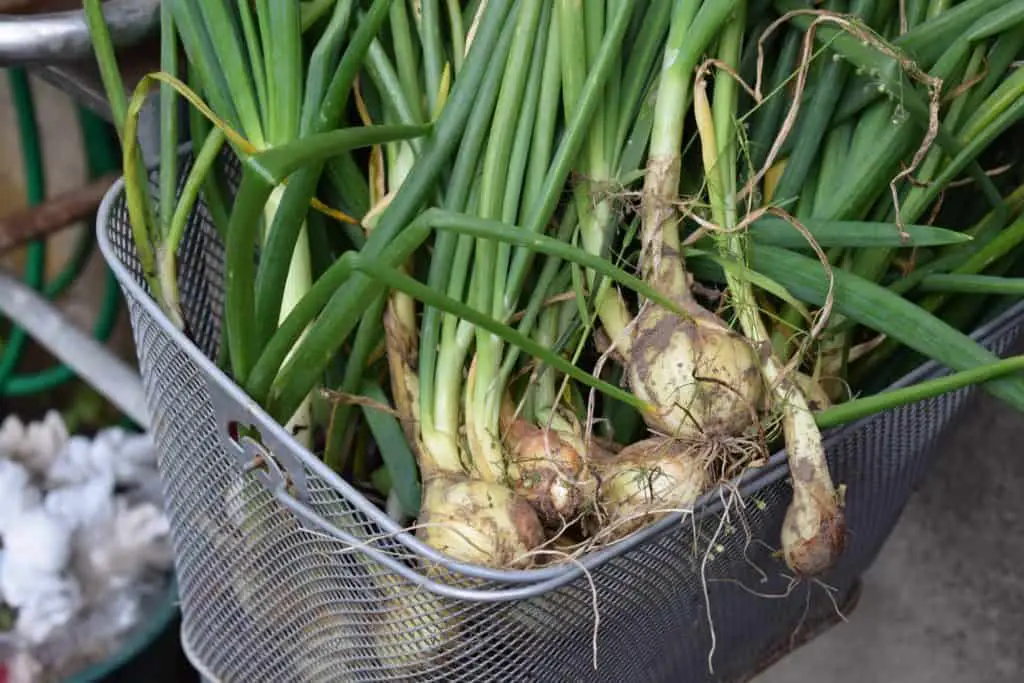Growing onions at home in a pot is easier than you might think if you plant and care for the plant correctly.
In this article, I will tell you everything, that you need to know in order to grow onions the right way. So let´s get started!
What Onion Variants Are There?
There are many different onion variants available to the backyard vegetable gardeners.
These varieties of onions can be divided into three main categories – green onions, pearl onions, and bulb onions.
These varieties vary in size, shape and sweetness levels. Nowadays, some seed companies provide “variety packs” with three to four different onions in a seed packet or single bundle, which is a wonderful way to try various onion variants without spending a lot of money.
Here’s a list of some common onion varieties.
Green Onions

Green onions are at times known as scallions, salad or spring onions, and can you can find them with the lettuce in the product segment.
They are complete young plants that are grown from seeds and harvested as their leaves and bulbs become juicy. Unlike the bigger onions, these plants are not allowed to mature or dry out; they’re young onions.
Their plump little white roots must still be attached to the ground. The more intact and longer these roots are, the quicker the onions will develop again.
Before planting them, you should cut off and utilize their long green tops. Trimming the tops is essential to encourage new growth. However, ensure that you do not cut into the white bulbs.
Pearl Onions
Boiler onions, also called pearl onions, are a bit of an epicure item.
These small dried onions are only one or two inches in diameter and are mostly used for roasting with meat and new potatoes or for creamed onions.
They might be white, red, or even yellow. They normally come packed twenty in a small nifty mesh bags, but you can also find them at a farmers’ market in bulk.
These onions will take a longer time than their green counterparts to get started because they’ve to grow some new roots. But since they have larger bulbs, they have great potential to give you a good display of greenery to enjoy and harvest.
Their tops are pretty pointed, and the roots are usually a brushy dried growth.
Bulb Onions

Onions will grow best in cool weather, and they invest their energy into forming bulbs during the hot and long days of the summer season.
Long-day varieties, which are the most common types, produce bulbs once they sense more than 14 hours of daylight.
However, some shorter season variants will enter bulb formation with less daylight. Since these onions take a long time to get to maturity, you’ll likely be the best beginning with seeds early in the indoors to receive a jump on your season.
What Is The Best Soil For Growing Onions?

Before planting onions, you should put a little time and effort into creating good soil.
Onions, just like most vegetables, grow well in slightly acidic soils.
According to NGA (National Gardening Association), the soil for growing onions must have a pH level of approximately 5.5 to 6.5.
At the high side of this range, the nutrients of the soil are easily accessed. While the onion plant can survive when planted at different pH levels, they will not grow well.
To determine your soil pH before growing onions, take a sample at an extension office for checking or utilize a store-bought testing kit.
If soil is not in the right pH range for planting onions, you can adjust it.
Amending soil using organic substances, such as old leaves, will drop its pH and boost its level of acidity. Some fertilizers such as ammonium sulfate will also increase acidity as well.
To make the soil more alkaline, experts recommend treating it with some wood ash, which increases the pH level.
However, adjusting the pH of your soil takes time, and might also require several treatments until you achieve the desired outcome.
What Containers Should You Use For Planting Onions?
Some vegetable plants cannot be contained, but onion crops stay put in their small patch of earth, and it’s this prim characteristic which makes them exceptionally well-matched to container growing.
But still, onions require some room. Therefore, sticking them into any old pot that’s lying around might not be the best thing if the objective is to get some decent and plump onion bulbs to harvest.
Generally, deep pots which are not cavernous provide the best benefits when growing onion plants.
Using a couple of small containers when planting onions is more convenient than utilizing one awkwardly huge pot.
Space efficiency and portability are essential in planting pots. Since you need to plant several onions to get a decent harvest, trying to plant your onions in pots that are 5 or 6 inches wide will be pretty cumbersome.
If you decide to plant onions in pots, select a pot with a big mouth.
The pot should be at least ten inches deep and several feet wide to make it possible to plant enough crops to make it worth your effort.
Many individuals have success growing their onion plants in a tub. Since plastic tubs are cheaper than comparably sized pots, growing onions in tubs is efficient and economical.
Just ensure that you put some holes in the bottom of your tub to provide good drainage.
You can also plant onions in gallon buckets, but you should know that you might only be able to plant 4 or 3 onions per bucket because onions require at least three inches of open soil all around them to develop properly.
Choosing A Suitable Location For The Containers.
Regardless of whether you choose to plant your onions in pots or a tub, you must put the containers somewhere they can get 6 to 7 hours of light.
If you’re planting indoor onions and do not have a place with enough sunlight, you can complement the light using fluorescent bulbs that are set closely to the plants.
A shop light on adjustable chains makes a perfect grow light for individuals who grow indoor onions.
How Do You Plant Onions In Containers?
The way to plant onions in containers is just like growing them in the ground.
You will need good soil, plenty of light, good fertilizers, and adequate drainage.
To plant your crops, fill the pots half full with some moist soil and then arrange the bulbs or plants two inches apart when the root side is down.
Firmly but gently pack some more soil around the onion plants until the bulbs are fully covered or the trimmed tops of the onions are just peeking out.
Water properly and add some more soil if the water settles and later exposes the bulbs. Put under a grow light or in a sunny window because the onions require about 6 to 7 hours of light each day.
Keep your pots moist, and in several weeks you’ll have a crop of some green onion tops that you can harvest. Once harvested, they’ll grow some more green tops that you can harvest again and again.
How Do Your Water Onions And How Much?
Water is essential to planting onions in some container gardens since your onions will have limited access to natural rainfall from the surrounding soil like the onions planted in the ground do.
The onions grown in tubs and containers will require at least two to three inches of water per week, and perhaps even more during hot climates.
Check your onion plants every day, and if the topsoil feels dry to the touch, then you should provide them with some water.
You should thoroughly water the onions once you plant them, and frequently after that. Onions have incredibly shallow roots, so do not allow the soil at the root of the plants to become cracked and dry.
Overwatering is also problematic, as well. If you notice the leaves are developing a yellow tinge, you should cut back on your watering.
The closer you get to the harvest time, the more the onions need water. Nonetheless, when the tops of the onions begin falling over, you should stop watering and allow the soil to dry out before you can harvest the crop.
What Fertilizers Should You Use For Onions?
When planting onions in containers, you should loosen your soil to a depth of around 12 inches and then add one to two inches of compost as well.
You can also use dry fertilizer during this time. When you buy commercial fertilizers, you will find a list of three numbers on the side of your package:
The first one is the quantity of nitrogen, the second is potassium, and the third is phosphorous.
If you are utilizing 5-10-10 fertilizer, you should add four cups for every five feet of onion plants. For 8-16-16 fertilizer, you should add 1/2 cup in every five feet, and 1/4 cup when using 10-10-10 fertilizer.
Nutritional needs are usually different during the entire growing season.
Every two to three weeks after planting, you should fertilize using calcium nitrate in acidic soils, or ammonium sulfate in alkaline soils.
Always remember to water your onions after each application of fertilizers and avoid fertilizing when your onions begin to bulb.
Weeding And Mulching For Healthy Onions
Controlling weeds is vital to prevent any competition for the plant nutrients.
Applying corn gluten meal or Treflan raked into the top part of the soil every six weeks during the growing period will prevent the weeds from returning.
You can also mulch to preserve moisture and control weeds.
Mulching onions will keep them and the surrounding soil in great shape and also prevent various problems.
A two-inch-thick layer of some grass clippings, for example, helps onions remain weed-free and as this grass decomposes, it will also provide your plants with nitrogen.
Leaf molds is another alternative for a living and organic mulch, and it works well when mixed with some compost, providing calcium and magnesium to your plants.
Mulch is also vital for soil structure and will also shield your onions from the hot summer sun, assisting them in conserving water.
However, you should ensure to remove the mulch when your plants begin to bulb to help them cure properly.
What Pests And Disease Can Affect Onions?
It’s particularly essential to ensure that growth and environmental constraints do not affect bulb production and bulb quality.
By controlling diseases and pests, you will reduce rots and most storage disorders. Good rotational practices and soil sterilization are important when it comes to minimizing disease problems.
Crop nutrition is vital to make onion crops less vulnerable to diseases and pests. Here are the common pests and diseases that attack onions.
Onion Maggots
The onion maggot or fly likes laying its eggs right at the base of the onion plants.
To prevent that, you should cover your growing onion crops with mesh netting and seal it by putting some soil around the ends.
You should keep mulch away as well because these insects thrive in decaying organic matter. Also, make sure you harvest your onion crop as the season advances.
Onion maggots are normally a problem in the rainy periods, meaning these precautions might be unnecessary if you’ve planted onions in a dry season.
White Rot
The white rot disease is one of the most severe onion diseases because the spores will stay in the soil for a maximum of seven years.
The symptoms of this disease include wilted and yellow plants, and once you pull them up, you’ll discover white molds on the base.
To avoid this disease, you should stick to good crop rotation.
Eelworm
Eelworm refers to tiny worms that live in soils and will affect the stem and the bulb by deforming them.
The onion plants will produce some soft bulbs which can’t be stored. Proper crop rotation will assist in keeping the population of these worms down.
Bindweed, mayweed, and Chickweed are also popular hosts for eelworm, which means you should avoid weeds completely.
If badly affected, you should avoid planting peas, beans, strawberries, and onions for four years.
Downy Mildew
The downy grey mold covers onion leaves which will then die back and also dry from the plant tips.
Your onion crop will be soft and not suitable for storage.
This disease thrives mostly in wet weather, so if you’ve got a damp container garden, some raised beds will help to prevent this problem.
Weeding around the onion crop to improve air circulation will help a big deal as well.
Thrips
Thrips are some tiny insects almost as fat as a standard sewing needle.
To control them, you should take some dark pieces of paper into the container garden and knock your onion tops against them; if there are some thrips present, you’ll see their tan-colored little bodies on the papers.
Some treatments that contain insecticidal soap are also known to eliminate them. Follow the directions on the package. Spray your plants twice, at least three days apart, and the insects should disappear.
Harvesting And Storing Your Onions

Spring planted onion crops are ideal for storing throughout the winter season.
You can tell your crop is ready when around 75% of the onion stems have turned yellow and started falling over.
If you’ve had a very wet year, the onion stalks can remain green for a long period and prolong the process of ripening.
However, you can accelerate the time of harvesting by pulling up the onion bulbs a little to break some of the plant roots, about ten days later you can lift your onion crop completely.
Harvesting
In general, onions are usually ready for harvest one week after the tops have begun falling over and are yellow.
You can use a fork or your hands to lift the plants out of the soil. Take care to avoid damaging the skins because this will invite the decay bacteria in to attack the flesh of the onions.
You should harvest your onions on a sunny day and then clean off any soil attached to them.
The onions are later put on top of the soil where they’ll dry out with the assistance of the wind and the sun.
You should leave the onions outside for a couple of days until all the tops become dry.
Remove the onion tops using a sharp knife approximately 2cm above the top of the onion so that the decay organisms will not have any direct access to the bulb of the onion.
Avoid cutting the onion stalks off before they dry out completely or they’ll rot. If you would like to store them loose, wait until the stalks become papery and dry which will only occur around two months after pulling.
Spring onions should be harvested when they’re around 30 to 40cm in height and can also store for a maximum of one week in a fridge.
To prepare onions during spring, remove the outer leaves and then wash. Remove any onions that have any signs of damage or decay because they can affect the fresh onions if they’re stored.
Curing
How long the onions will stay depends on how well you treat them after harvesting.
They should be dried thoroughly to prevent issues with rot.
If left outdoors when the weather is pretty dry, they will take around two to three days. By this time the whole neck, where the bulb meets the leaves should be completely dry, all the way to the onion surface, and should not slide once you pinch it.
The skin of the onion will take on an incredibly uniform color and texture. If you are expecting rains, you will have to dry your crops indoors.
You can do this by spreading them out in a proper-ventilated space with enough room to breathe. However, drying the onions indoors might take a longer period than outdoors.
If you plan to store your onions through winter, then you should cure them properly by hanging them in well-aired places such as a dry shed. Strings or mesh bags can be utilized to hang, and group and they should be hanged for about three to four weeks.
Once your onions dry completely, clip all the roots and then cut back all the tops to around one inch and they’re ready to eat.
Storing
You should store onions in a dry and well-ventilated place, such as a cellar or garage.
Put them in netting or mesh bags to permit proper circulation of air. You should periodically check for some soft onions, and get rid of them to prevent the others from deteriorating.
As a general rule, sweet onions do not store for long when compared to the more pungent ones, which means you should use the sweet onions first.
The right treatment at harvest time maximizes the duration of time you will be able to keep your onions.
Conclusion
Growing your veggies is the best way to consume locally grown food. Although gardeners gravitate towards more perishable produce, homegrown onions are tough and versatile plants that you can produce over pretty long periods.
Root crops aren’t the typical container-planted vegetables, but utilizing planters will give you a way to plant onion crops that you can easily harvest when you need them.

